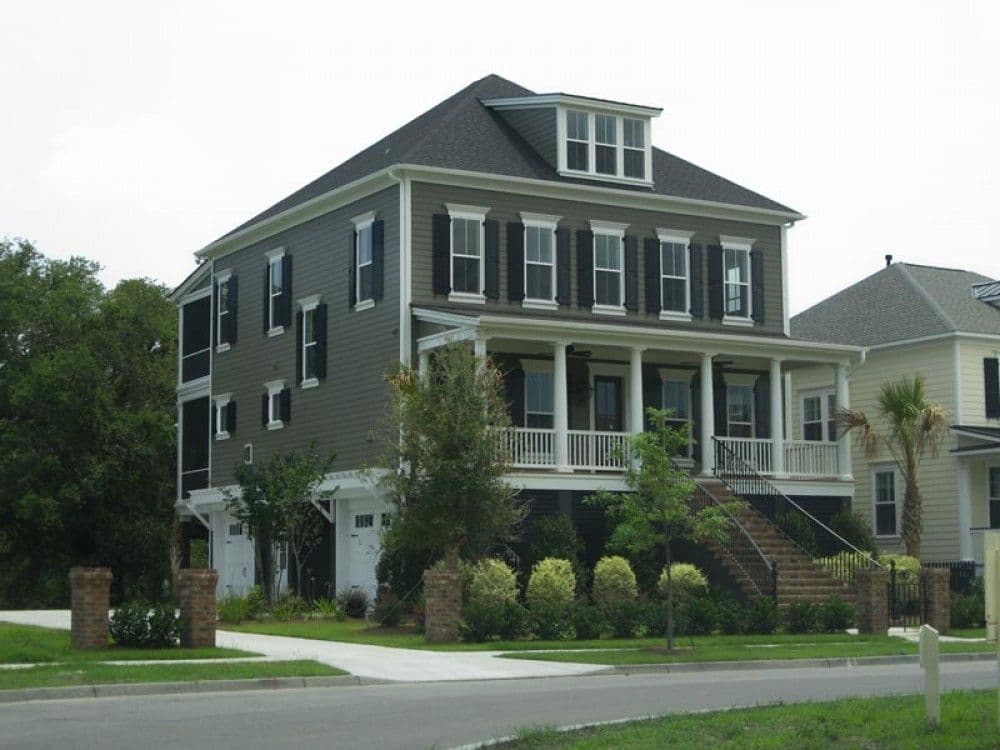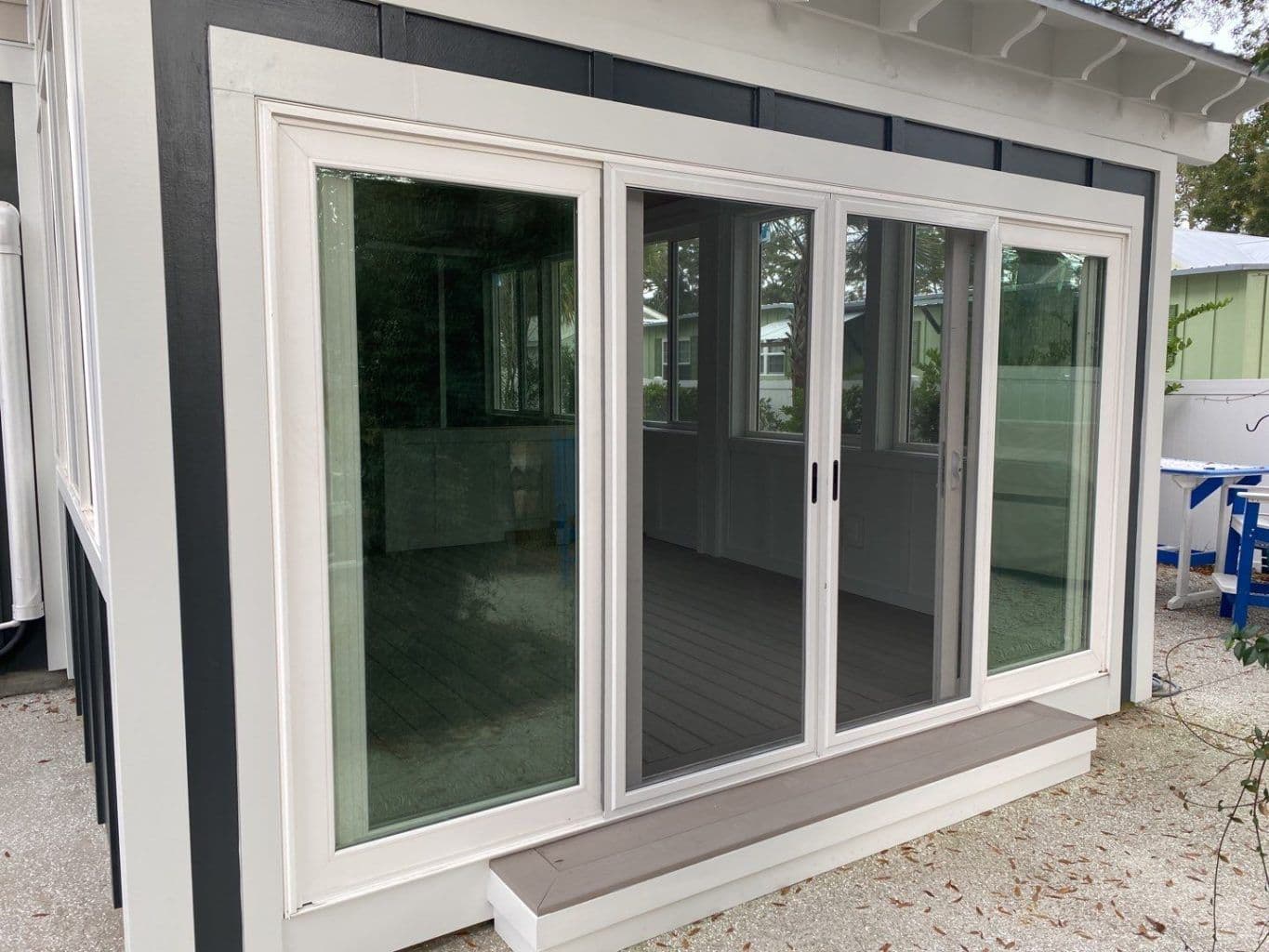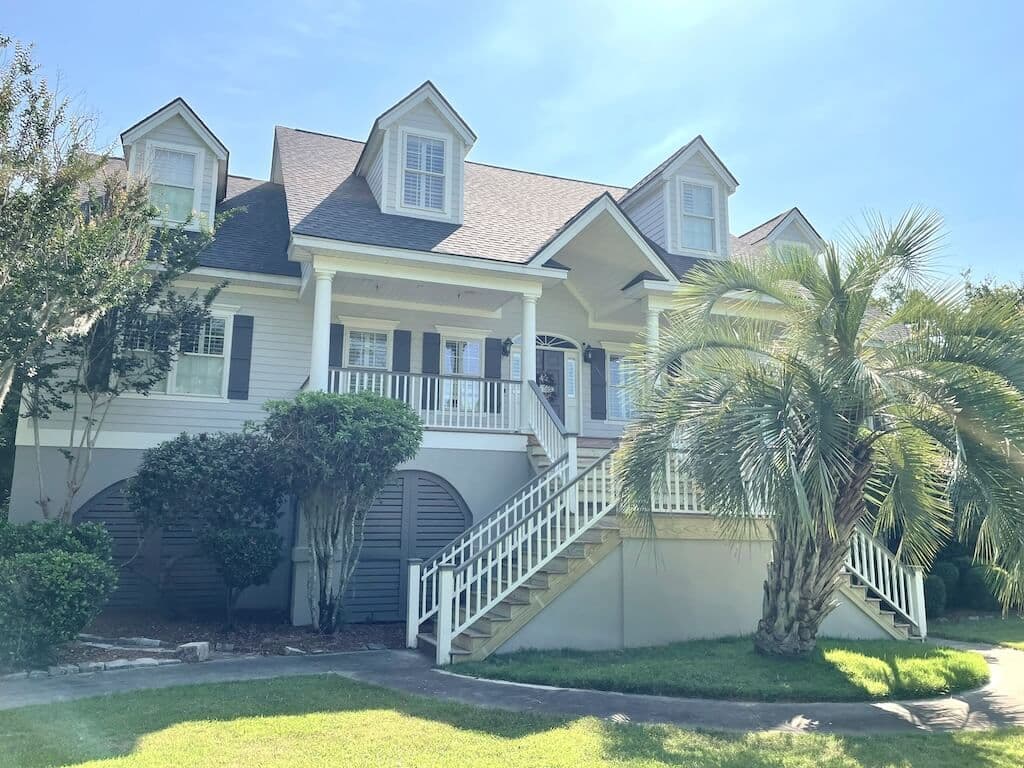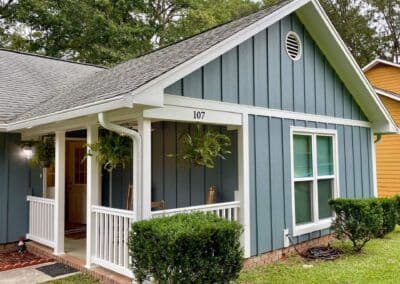Which Comes First: The House Wrap or the Hardie Siding?

Are you thinking about getting new siding on your home? Have you heard about James Hardie siding and wondered if it’s a valuable investment? The 2019 Remodeling Impact Report showed a 76 percent project value recovery.
Besides the financial gains, James Hardie fiber cement siding increases your home’s protection. When planning this upgrade, it’s key to know about the basics. For example, does the house wrap or James Hardie siding get put on first?
Keep reading to learn more about this type of siding and the answer to this question.
Advantages of James Hardie Siding
James Hardie makes fiber cement siding with the look and texture of natural wood. Yet, you don’t have the maintenance concerns that come with wood siding. It’s resistant to pests, warping, cracking, and rot.
Many areas have experienced record-breaking natural disasters in the last decade. This siding is rated to withstand winds up to 130 mph which is vital during hurricanes and tornadoes. It also offers the highest fire rating to keep you safe and enhance your peace of mind.
Fiber cement siding’s strength and durability lie in the manufacturing process. It’s made with a mixture of sand, cement, and cellulose fibers. These fibers create a natural wood appearance and texture.
You can paint and repaint as often as you desire. It also comes in many pre-painted colors if you want the quickest project completion.
This siding gives you the best middle ground of durability and affordability. The James Hardie ColorPlus® products have a 30-year manufacturer product defect warranty. You’ll also receive a 15-year warranty that covers the finish.
What Is House Wrap?
Have you seen new building construction with a colored material covering the outside? This is house wrap, a synthetic layer applied to protect the plywood from moisture. Its properties make it quick to install and overlap creating a complete seal.
The Benefits of House Wrap
Old-style construction put up asphalt-treated paper to create a barrier. Later, it was discovered that this reduced the home’s air quality. Experts also found that these homes had higher volatile organic compound (VOC) levels.
The Occupational Safety and Health Administration (OSHA) raised concerns about VOC exposure. These fumes can cause skin rashes, headaches, fatigue, and sensitization. Other symptoms include decreased appetite, cough, skin cancer, and eye and throat irritation.
Thus, manufacturers began developing safer options for insulating homes and buildings. Today, builders use synthetic wraps for insulation without the VOC risks. The following describes the advantages of applying house wrap.
Increased Energy-Efficiency
Over time, cracks and fissures may develop and allow moisture as well as hot and cold air in. When drywall or plywood has ongoing moisture contact, its structure and stability weaken.
This often leads to mold, mildew, and rot. This wrap withstands driving rain, gutter backups, and other water exposure risks.
House wrap also serves as a wind barrier to keep hot and cold air out of your home. These moisture and wind protection properties preserve your home’s R-value.
R-values rate the insulating effectiveness of different materials. It’s measured as “R-values per inch of thickness”. The type, density, and thickness of the material are all factored into this rating.
In general, you want a higher R-value meaning that it offers better energy efficiency. This may mean you must pay a higher price initially. Yet, you’ll realize a return on your investment with lower monthly energy bill costs.
Earn Tax Credits
The Residential Energy Efficiency Tax Credit reduces your tax bill for certain upgrades. Using products certified to increase your home’s insulation qualifies for the credit. You’re allowed to deduct up to 10 percent of the cost until you reach the limit of $500.
Qualifying weatherization activities include spray foam, weather stripping, caulk, and house wrap. Thus, properly installed house wrap can save on taxes as well as monthly utility bills.
Yes, House Wrap Does Come First!
Some people debate about the best approach for how to wrap a house. Often, those installing foam insulation ask, “Do I put house wrap on first or second?”
Whether you’re installing James Hardie siding or not, house wrap is always applied first. The experts place the material in the proper orientation to achieve maximum insulation. They’ll also make sure it overlaps and that there aren’t any gaps.
This creates the first layer of protection from heat, cold, and moisture intrusion. Next, the cement-fiber siding is precisely installed to complete the optimal home seal.
This approach to cement-fiber siding application is the same in all circumstances. It’s not just for new building projects. For example, you may decide that you wish to update your existing home’s exterior.
Buildings or houses with wood or brick exteriors can have a wrap and cement fiber siding added. It’s important to have it professionally wrapped to ensure a smooth surface. You can also replace old vinyl or wood siding with Hardie siding.
Properly installed house wrap under James Hardie siding will last as long as your house.
Do You Need a Home Renovation Expert in South Carolina?
Now you know about house wrap and James Hardie siding and which to apply first. Contract Exteriors serves the Coastal South Carolina area. We’re the only Elite Preferred James Hardie Contractor & Timbertech Platinum Pro Contractor in Myrtle Beach and Charleston.
You’ll always receive high-quality workmanship, care, integrity, and honesty. Our experts install siding, roofing, decking, windows, and doors.We’re proud recipients of the James Hardie President’s Club and the James Hardie Guild Quality Customer Service Award. Our business is also certified by the Vinyl Siding Institute. Get a free estimate today to start upgrading your home’s exterior.
Outstanding Reviews
Brooks was my contractor on the project. He was awesome! He was there with me every step of the way! Eugenia was very helpful in the office and assisted me in getting the HOA approval. Jason explained the warranty process and even brought me a cake!
Everyone we came in contact with was very cooperative and easy to work with. It was a pleasant experience from the first online chat. They listened to us and helped solve any issues we were concerned about
Wow, this company goes above and beyond. From the very first reach out to the very last interaction once the job was completed. Everything was done first class. The quality of work, the constant communication and level of service was like nothing I’ve ever experienced with any contractor. I priced out a couple different contractors compared to contractor exteriors and I will tell you I would have paid more just to have this experience with them. I had Jonathan as my project manager and he was exceptional.
Very happy with our new Timbetech front porch deck and steps with AZEK facia and risers. Everyone at CE was responsive and very professional explaining every step in detail! We have several homeowners in our community who have already asked for contact info info. Jonathan is a very good project manager and ensured we were satisfied with the quality, cleanliness, and appearance of our new front porch! Thank you!
In choosing a company to replace our deck, we researched and decided to use Contract Exteriors. We definitely made the right choice. We are very pleased with the results. Special thanks to Brooks, our Project Manager, who kept us updated and informed everyday.
Contract Exteriors did a great job for me. The entire group was very responsive, and my deck project turned out fantastic. My project, as all projects, had some surprises that were handled professionally and promptly. Randy, Brooks, and the office staff were great throughout the process. They proactively kept me informed on the status of the project. I never had to call twice to get a question answered or ask for an accommodation.
We couldn't be happier with contract exteriors and the job they did. Our beach house looks brand new with the new Hardie board and white trim. EVERYONE was friendly, well mannered, professional, and was always ready to answer any questions that we had. Miguel and his crew did an excellent job. Brooks the project manager was wonderful, and also Chad who helped us from the very beginning, also the girls in the office. We would not hesitate to use them again.
This company did an amazing job on my siding project. From start to finish they were very professional, helpful, and on time. Eugenia clearly communicated the whole process to me before they even started the project and Brooks was always available to answer my questions. He even came and ensured the cleanup was perfect and finished up the exterior lighting. Even after the project was finished this company ensured communicated to ensure everything was perfect. Super pleased. Thank you!
Everything about this group was extremely professional. Renovations can be challenging but they carefully made sure that their products and our original structures fit together seamlessly. We are truly looking forward to our new elegant deck that will be essentially maintenance free for many, many years. We will definitely use this company for future projects.
Matt Kuzdrall made our whole experience of purchasing two new roofs for our buildings at the Children's Recovery Center so easy. Matt was professional and had all the answers to any questions we had. He has followed up since our new roofs have been installed to make sure everything is still great. Matt is awesome and I would recommend him to anyone I know looking for a new roof.




Our Teams Are Conveniently Located Near You





